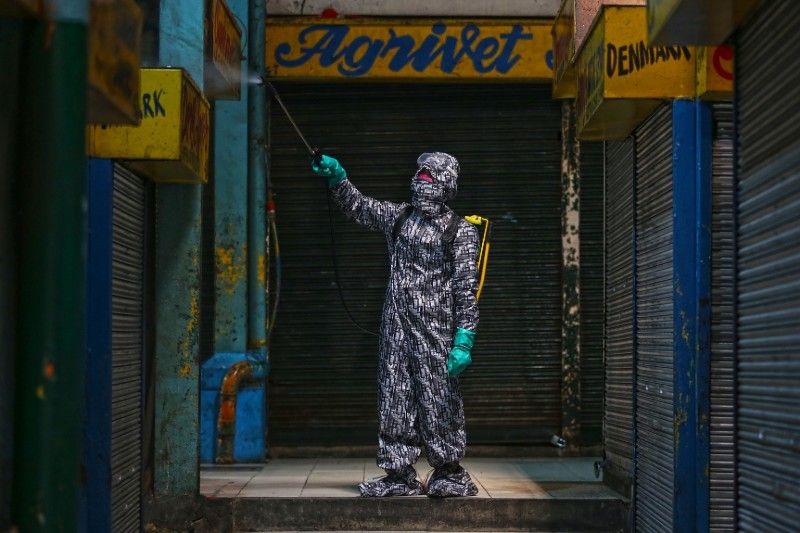COVID-19 did not come from a lab, Filipino epidemiologist stresses

MANILA, Philippines — Despite scientists and academics having long reached a consensus on the natural origin of the novel coronavirus disease 2019 (COVID-19), the fringe theory that the new pathogen was purposely engineered in a Chinese biolab—which has been called "a story that won't go away"—continues to proliferate on social media.
Even mainstream media outlets have picked the story up, only to cite unverified sources that were questionable at best.
Sought for comment by Philstar.com, Health Secretary Francisco Duque III said earlier: "That's a lot of speculation. I've heard about it but there is really no clear evidence to show that. There's not evidence unless it can be proven beyond reasonable doubt."
FACT CHECK: 'No clear evidence' for fringe theory virus was engineered in Wuhan lab
As it stands, the generally-accepted narrative of the pathogen's origin is that it came from the Wuhan South China Seafood Wholesale Market—a notion Duque said has been growing rather flimsy in recent days.
"Even that is questionable eh. So there's nothing certain. They're saying it came from a seafood market or a wet market, and now that's being challenged, and there seems to be a growing body of evidence that this might have occurred as early as November," he said.
'Academics have already debunked it'
A local epidemiology expert, however, said that many credible sources have already spoken up about the fringe theory, pointing to academic studies that have condemned it.
"We’ve also heard of this controversial theory that the virus came from a lab, and fortunately many academic voices have already spoken to refute this theory," Dr. John Wong, president and founder of think tank EpiMetrics, Inc. told Philstar.com in an online exchange.
The epidemiologist, who also teaches at Ateneo de Manila University, cited four major arguments for the natural origin of the virus, namely, the behavior of the new pathogen, the possibility that it jumped from an animals to humans, and its biochemical features.
"SARS-CoV-2 behaves differently from how it has been modelled on computers, so it's not likely to be a human design, but rather one from nature," he said.
RELATED: Bioweapon conspiracy video creeps into Senate coronavirus hearing
"The explanation that the virus jumped from animals to humans is [also] plausible and has happened often before in history."
According to Wong, studies of the virus' living properties indicate transmission from an animal host to a human.
"Biochemical features of the virus have been shown to originate from zoonotic transfer, or when the virus transferred from animals to humans," he said.
'Rumors and misinformation'
Reasons to be wary of such a theory are plentiful, as it could very easily fan tensions in an increasingly sinophobic climate in the Philippines.
Wong pointed to study in peer-reviewed science journal The Lancet, saying, "a group of public health scientists have put out a statement in the [to] condemn the theory and cite several genome studies that show the wild and natural origin of the virus."
"The rapid, open, and transparent sharing of data on this outbreak is now being threatened by rumours and misinformation around its origins. We stand together to strongly condemn conspiracy theories suggesting that COVID-19 does not have a natural origin," the study reads.
"Scientists from multiple countries have published and analysed genomes of the causative agent, severe acute respiratory syndrome coronavirus 2 (SARS-CoV-2), and they overwhelmingly conclude that this coronavirus originated in wildlife, as have so many other emerging pathogens."
Experts are also generally agreed that the genetic properties of the virus shows that it was not engineered by humans in a laboratory.
A separate study published in Nature Medicine entitled "The proximal origin of SARS-CoV-2," wrote, "It is improbable that SARS-CoV-2 emerged through laboratory manipulation of a related SARS-CoV-like coronavirus."
RELATED: German journalist bristles at Chinese Embassy's open letter over story
Pointing to the proximity between the seafood market where the virus began and other biolabs in the region, some theorists also speculate that the virus was brought, intentionally or not, by scientists in laboratories close by.
"The genetic data irrefutably show that SARS-CoV-2 is not derived from any previously used virus backbone," Nature Medicine said, acknowledging the possibility that either horseshoe bats were still present at the wet market, or that "a progenitor of SARS-CoV-2 jumped into humans."
The Wuhan Institute of Virology is 15 miles (24 kilometers) away from the Wuhan South China Seafood Wholesale Market.
"There have been no laboratory studies on a virus like SARS-CoV-2, with the closest being a bat virus found 1,000 miles from Wuhan, in Yunnan, China," Wong said.
- Latest
- Trending
































